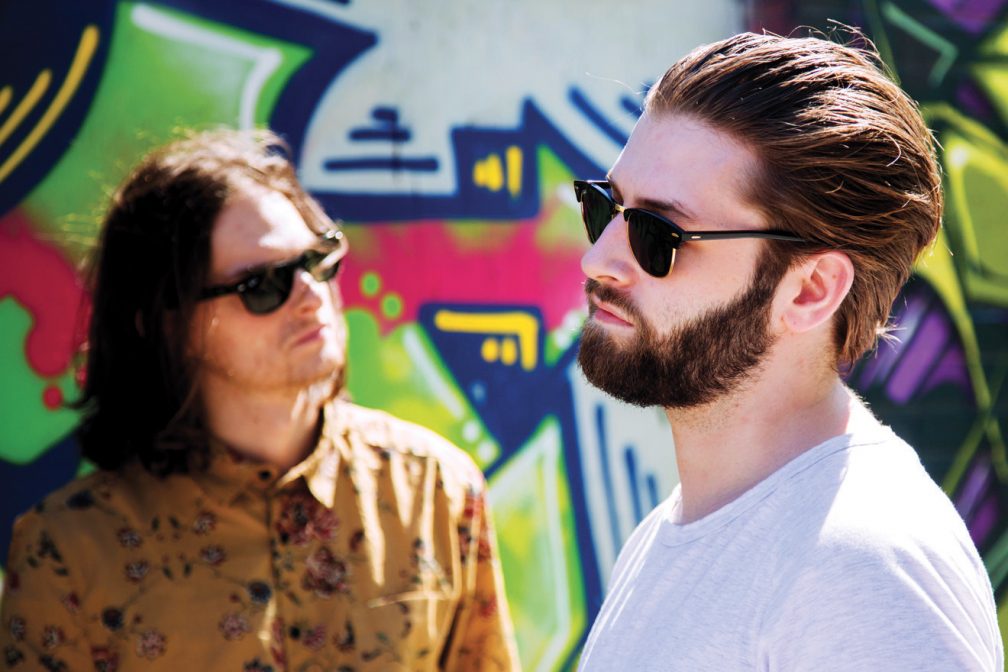 Features
Features
The Hot 6ix: Zeds Dead and Toronto
A new documentary, ‘LEAP’, explores Toronto’s musical and cultural diversity, and how it inspired Zeds Dead’s new album
Anchored between three legendary music cities – Chicago, Detroit, and New York – Toronto has sometimes been looked upon as a little brother, a tagalong to its neighbours. But beyond headline stars Drake and the Deadmau5, ‘the 6ix’ is teeming with musical and cultural diversity: artists of all different styles with nothing more in common than their passion and the mixed heritage of the city itself. The electronic music community in particular has continued to grow more vibrant every year: it is home to acts like MSTRKRFT, who exploded as part of the blog-haus electro movement in the late 2000s, underground favourites Art Department, and techno mainstays like Carlo Lio. But there is an even younger group of acts who are now pushing their way into the mainstream. Part of that movement is Zeds Dead, a duo that was part of the city’s bass scene for years, and that have since gone on to international stardom.
Beginning around 2009 the group’s underground “Bassmentality” events shuddered and wobbled in the basement of 751, a dive bar in the city’s famous Queen West neighbourhood. The party catered to a burgeoning interest in bass music as dubstep gradually migrated across the Atlantic. Its popularity was a surprise in a city that for many years embraced its identity as a centre for techno, leaving the raucous antics of bass music to the west coast of Canada in British Columbia – but Toronto’s bass history also runs surprisingly deep.
On a warm, windswept street in the Trinity-Bellwoods neighbourhood an ice cream truck is playing a familiar jingle. Someone dashes out of a house and over to the idling vehicle. It’s Dylan Mamid, one half of Zeds Dead. There’s something special about the soft-serve you can get from the trucks in the neighbourhood, he explains, sipping from a freshly blended chocolate milkshake. Inside his home, we connect with his partner Zach Rapp-Rovan, the other half of the duo, over Skype.
Asked whether they ever felt out of place doing bass music in Toronto, they cite the city’s less well-known affinity for the style. “Toronto has a big drum ’n’ bass history,” says Zach. “They say it was the second biggest spot for drum ’n’ bass outside of London, but that was before our time. Dylan actually went to one of the last raves at System Sound Bar, which was an iconic spot. We were way at the tail end of that.”
In the late 90s drum and bass – or jungle, as the style was still often called – found a home in Toronto. The city regularly attracted international talent such as Andy C, Shy FX and DJ Kenny Ken, some of whom still regularly play there to this day. Central to the scene was the System Sound Bar, a 19+ venue that featured weekly drum ’n’ bass parties like FungleJunk on Tuesdays. System Sound Bar also helped to establish local acts like Capital J, Marcus Visionary, and DJ Sniper –although you’d be hard-pressed to recognise many of the names outside Canada today.
The venue closed its doors in 2005, but despite the jungle wave crashing in the early 2000s, the sound was instrumental for Zeds Dead to move away from their initial love of hip hop into the realms of electronic music. “My friend’s older brother went to raves, and through him he started playing me some drum ’n’ bass tracks,” says Dylan. “Some of the first drum ’n’ bass tracks I heard were remixes of hip hop tunes because drum ’n’ bass is double the tempo of a lot of hip hop stuff, so that was an easy way to get into electronic music.”
More than just a breeding ground for hip hop, the city’s mix of immigrant cultures, particularly those from the Caribbean, also played a vital part in fostering a bass community and influencing the unique sound of Zeds Dead. They credit local dub reggae bar Thymeless for really exposing them to dubstep: “That was a big, original influence spot for us,” says Dylan. “Probably one of the first places where we heard dubstep on a decent system – a small dub reggae club and they just had one big fucking wall of speakers. So it was our first time hearing some of those tracks with a proper sub.”



